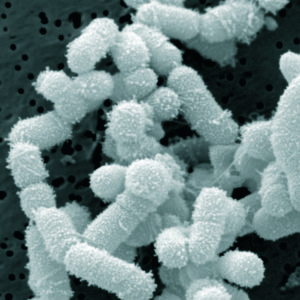 Bacterial vaginosis is a problem for many women, with estimates that up to a third of women of reproductive age get it at some point in life. Bacterial vaginosis is a condition where the microbes in the vagina are imbalanced or out-of-whack, especially with diminishing numbers and types of Lactobacillus species. Lactobacillus species are typically the dominant bacteria in healthy vaginal microbiomes.
Bacterial vaginosis is a problem for many women, with estimates that up to a third of women of reproductive age get it at some point in life. Bacterial vaginosis is a condition where the microbes in the vagina are imbalanced or out-of-whack, especially with diminishing numbers and types of Lactobacillus species. Lactobacillus species are typically the dominant bacteria in healthy vaginal microbiomes.
Unfortunately, some women have recurring bacterial vaginosis (BV), many who wind up taking course after course of antibiotics to try to deal with it. Symptoms can include thin gray, white, or green vaginal discharge, vaginal itching, burning during urinbation, and a smelly fishy vaginal odor. Which is why a small study done in Israel finding success with vaginal microbial transplantation (VMT) from healthy donors to women with BV is very exciting.
Researchers transplanted vaginal fluid (with all its microbes) from 3 healthy women (and thus a healthy vaginal microbial community) into 5 women with severe BV that did not respond well to antibiotics. Afterwards four of the recipients had long-lasting (up to 21 months) vaginal microbial changes and complete remission of BV (2 after the first transplant, 2 after 3 transplants) - becoming more like the donors' vaginal microbiome, and also rich in Lactobacillus. The 5th person had partial improvement of BV, but there were complications - she took a course of antibiotics for a throat infection, her BV symptoms returned, and then she received another vaginal microbiome transplant, after which her vaginal microbes were a mix of her original and the donors.
Of course larger studies are now needed, especially because there can be risks when receiving another person's microbes (e.g. accidental transfer of viruses). But I also want to point out that some of these Lactobacillus species (especially Lactobacillus crispatus) are easily available without a prescription, and women have been self-experimenting with them, many with good success.
Excerpts from Ars Technica - Vaginal-fluid transplants treat incurable condition in pilot study
Vaginal-fluid transplants appeared to successfully treat devastating vaginal conditions that had failed all other treatments options, according to a small pilot study published this week in Nature Medicine.
The study comes amid a gush of enthusiasm for the transplants, often dubbed vaginal microbiota transplants (VMTs). Though researchers are only now getting down to investigating their potential, many are optimistic that the microbe-toting fluid swaps will prove broadly successful at treating swaths of conditions in more rigorous trials.
With the mood set, a team of Israeli researchers had been working on a first exploratory trial since 2014. The trial included five women (aged 27 to 47), who all suffered from intractable cases of bacterial vaginosis (BV) but were otherwise healthy. BV is a condition marked by alterations to the microbial communities that typically reside in the vagina, which can lead to a range of problems—from malodorous vaginal discharge to increased risks of upper-genital-tract infections and pregnancy complications, as well as greater susceptibility to sexually transmitted infections.
The women had experienced at least four bouts of symptoms from their condition in the previous year and endured repeated antibiotic regimens to try to kick the condition without success. They all reported that their BV had significant effects on their lives, including harming their relationships and self-esteem.
Two of the recipients showed long-term BV remission after just one transplant. They reported improvement in symptoms within one week of the procedure and stayed in remission for their follow-up periods, which lasted up to 11.5 months. Two others ended up undergoing three transplants before achieving complete remission through their follow-up periods, which lasted up to 21 months. Genetic analyses suggested that the recipients’ vaginal microbiomes had shifted to look more like the donor communities.
